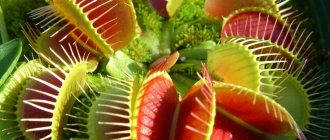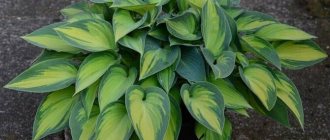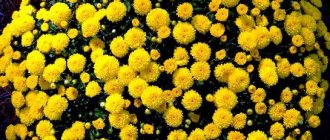Description and features of chrysanthemum
Chrysanthemums have a powerful rhizome, erect stem and underground shoots. The inflorescence is collected from many flowers. Its diameter is from 5 to 20 cm. They can be simple or terry. When qualifying varieties, they also focus on the color, shape and size of the baskets.
When determining the doubleness of chrysanthemums, be sure to take into account the severity of the disc and the difference between the number of flowers of different types.
Stem leaves can have different lengths, shapes and degrees of dissection. On one side, the plates are painted dark green; on the other, a dull grayish pubescent surface can be found. A rather specific aroma comes from the leaves.
The height of the plant varies from 15 cm to 1.5 m. The petals are reed, simple, spoon-shaped and tubular.
Chrysanthemums are characterized by resistance to low temperatures. They are not picky about the soil composition, so there are usually no difficulties with planting. These flowers acquire a special charm in autumn. Their inflorescences look good against the background of fallen leaves and evergreen shrubs.
Popular varieties of low-growing chrysanthemums
Multiflora is a variety, or the general name of a whole set of subvarieties, a plant belonging to the family of Asteraceae of the small-flowered type. It is a relatively new, but already very popular variety of chrysanthemums with spherical bushes and an average flowering time, with a wide range of colors and small flowers. Belongs to the chrysanthemums of the Korean group, which have dense inflorescences. Multiflora has many varieties (hybrids), their number amounts to several thousand. This is the most popular variety in garden landscape design. It can be not only short, but also medium and tall, and independently, in the process of growth, takes on a beautiful spherical shape.
There are a great many varieties of low-growing chrysanthemum, but there are also the most common ones, which are considered the main species.
Talisman is a variety belonging to semi-double small-flowered chrysanthemums, with raspberry or beet-colored flowers. Early flowering.
Snow White is a variety with spherical bushes, with flowers about 5 cm in diameter, corresponding to the name, white. Early flowering.
Ausma are spherical bushes with yellow-orange flowers. Early flowering.
Smile - spherical bushes with full tube-shaped petals. The flowers reach 8 cm in diameter and are purple in color. Medium bloom.
Barbie is a plant with flowers 6 cm in diameter, needle-shaped and tubular petals with a soft pink color. Refers to medium flowering chrysanthemums.
Alexandrite is a plant with semi-double white flowers with a diameter of 5 cm. The center of the flowers is yellow-pink.
Gels - bushes grow in the shape of a ball, flowers are 3 cm in diameter, yellow in color. Early flowering.
Chrysanthemum Alexandrite
For the beauty of the low-growing varieties, we can separately highlight such masterpieces of selection as Evening Lights with bright scarlet petals, striking the imagination with their festive hue. In contrast to the bright Evening Lights, the Varvara variety has soft flowers of a romantic lilac-lilac hue that soothes the psyche. Alpine chrysanthemum is a very short, early flowering plant that also deserves attention due to its beautiful lilac hue.
Selection by region
You should choose certain varieties of chrysanthemums, taking into account the climatic conditions of the region in which you are going to plant them. So, if you want to grow such a crop without problems even in the harsh conditions of the Far North, then it is best to choose a Korean variety for planting. It is also permissible to plant it in the Urals, like the “Velvet Autumn” variety. If we are talking about territories with a milder, non-aggressive climate, then the “Fantasy” variety .
The variety Susan`s Bonnet has the highest resistance to cold . It can be grown even in regions where very cold winters occur.
Chrysanthemums are taking root well in the Moscow region. Here they are grown both from seeds and cuttings. Some gardeners resort to the method of dividing the bush. In the local climatic conditions, the plants feel good.
If you want to grow only large-flowered varieties of this gorgeous plant, then you should consider that they take root well in the southern regions. For all other territories, it is advisable to select more cold-resistant specimens. When choosing a specific variety to grow in your region, it is better to consult with experienced flower growers or contact sales consultants at a garden store .
Knowledgeable people will tell you which varieties of flowers make sense to buy, and which ones will not grow where you live.
The best annual varieties of chrysanthemums
Annual chrysanthemums easily adapt to any conditions and are completely unpretentious in care. And here are the most beautiful and spectacular among them!
Cockade
The variety produces unusual basket-shaped inflorescences with colored rings on white inflorescences. Cockade belongs to the keeled chrysanthemums, most of which came to us from Africa.
Rainbow
Delicate inflorescences resemble multi-colored umbrellas with bright rings. Most often, the flowers are a soft pale pink color with yellow, white and red transitions.
Masquerade
The landing of the Masquerade is always a surprise. Because the flowers can be single or double, white, yellow, pink or red.
Nordstern
A beautiful annual with a bright dark center and light edging of simple inflorescences. Nordstern feels great not only on the plots, but also on the balcony.
Atrocoenium
The spectacular variety is loved by gardeners and landscape designers. The bright yellow center is bordered by dark red or crimson petals.
How to plant?
It is important to plant perennial chrysanthemums correctly, following all the rules, taking into account all the nuances of the process. Only if these requirements are met will you subsequently be able to enjoy the beauty of the plant.
Before planting chrysanthemums, you need to choose a suitable place for them. The area should be sufficiently lit. Chrysanthemums bloom poorly in the shade: in such conditions, the flowers will be very small, and the stems will be too long, as they will stretch in search of the missing light. The site should be well protected from winds and drafts.
When choosing the optimal place for planting chrysanthemums, you should consider the following nuances:
- the soil must be well permeable to both moisture and air;
- the soil must be loose;
- you can use soil of almost any type and composition, with the exception of heavy clay;
- it is desirable that the plants be planted in fertile soil, otherwise the flowering will not be lush;
- It is better to choose slightly acidic soil.
Chrysanthemums should be planted correctly according to this plan.
- First you need to prepare the holes. Their depth should be approximately 40 cm. There should be 40 cm of space between the recesses, and 50 cm between the rows.
- A layer of drainage, for example, made of sand or stones, should be laid at the bottom of each hole .
- You will need to pour a handful of humus into each hole, and then water the soil well.
- Next, the chrysanthemums are planted so that they are not too deep.
- Stable pegs should be installed nearby. Subsequently, they will become a good support for the bushes.
Planting and care
Chrysanthemums that can withstand low temperatures should be planted in open ground. Spring planting is preferable to autumn planting. This is due to the fact that the plant, which has not yet taken root, is greatly weakened.
Seedlings should be placed at a distance from each other. The distance is determined based on varietal characteristics.
Temperature and lighting
Chrysanthemums are a garden crop that feels comfortable at +15 °C. In summer, crops are cooled through regular watering. Despite the light-loving nature, these flowers still need shade. Shelters that provide it should be installed at noon.
Landing dates
Chrysanthemums do not tolerate heat. The weather in spring is quite changeable, so it is recommended to choose morning or evening hours for planting. It is advisable that the weather be cloudy. In this case, the sprouts will not be damaged by direct sunlight.
In regions with a mild climate, garden chrysanthemums can be planted in the fall. In any case, planting should not be carried out later than mid-September. If the seedling is tall, support may be required.
Planting scheme
Before you start planting, you need to choose a suitable location. It should be open to the sun. The recesses are made according to a predetermined pattern. There should be at least 50 cm between tall chrysanthemums.
For small flowers, the distance can be reduced to 25 cm. The next step is to apply fertilizer. Chrysanthemums are planted in trenches and holes. Sand or drainage is placed at the bottom of each of them.
How to water and feed chrysanthemums
Chrysanthemum is very responsive to feeding. With their help you can:
- increase the height of the plant and the size of the flower - nitrogenous fertilizers are used for this;
- accelerate the formation of buds - phosphorus fertilizers;
- Extend the life of cut flowers - potash fertilizers.
Properly selected fertilizers will make the bush powerful and healthy.
The first fertilizing is applied after the cuttings have rooted in the initial stage of development. After 2 weeks, you can add organic matter (mullein or bird droppings) under the bush. The second feeding is carried out during the formation of buds. For this, phosphorus-potassium fertilizers are used, which increase flowering and increase resistance to adverse weather conditions.
Fertilizing is applied after abundant watering. Water for irrigation should be soft and settled. During the flowering period, watering is reduced, and the bush is sprayed daily in the morning and evening with warm water.
Mulching
The procedure is necessary in order to protect garden crops from pests and fungal diseases. Mulching the soil will prevent the appearance of weeds. To process bush chrysanthemums, you can use sawdust, pine bark and needles.
How to trim and pinch chrysanthemums in the garden
In order for the plant to have a decorative appearance and form more buds, it must be trimmed and pinched in a timely manner. To produce a large number of flowers, pinch the central and side shoots.
In tall varieties, central pinching is carried out after the formation of 8 leaves. After this, intensive formation of lateral shoots occurs. Of these, 2-3 of the strongest are selected, and the rest are cut off at the root. In Korean chrysanthemums, the central shoot is pinched at the 4-5 leaf stage. After shortening the top, the side shoots grow very quickly; they are pinched after 7-8 leaves appear.
Planting and caring for chrysanthemums (video):
Features of plant flowering
Different varieties of culture may have different timing of bud formation and their characteristics.
Period of activity and rest
Chrysanthemum in a pot - home care
When the bush begins to bloom, the apical buds open first, then the process covers the entire plant (from top to bottom). The duration of budding is from 2 weeks to several months.
Important! The hibernation time of the crop covers November-March (some bushes rest until April). You can identify an awakened plant by the appearance of young shoots.
Types and shape of flowers
Chrysanthemums come in tall, dwarf and medium sizes; the tallest ones require support.
Individual shrubs that are prone to falling are tied up with the arrival of spring.
Important! Botanists divide the culture according to the form of flowering: cut flowers (with a single stem and a large basket, up to 20 cm in diameter) and multi-flowered.
Care after flowering
Withered buds are carefully cut off, leaving flower stalks until frost arrives. Attempts at complete excision will lead to serious problems: the rhizomes will not be able to set buds for the next season due to a lack of nutrients, the source of which is the green part.
Chrysanthemum low-growing spherical, plant description
Chrysanthemums belong to a genus of herbaceous plants from the Asteraceae family. Translated from Greek, the word “chrysanthemum” means “golden-colored,” which characterizes the most common color of the first representatives of chrysanthemums. Previously, the plant was called “Sunny Flower”. The origin of flowers has a long history and is mentioned in the chronicles of the ancient Chinese thinker Confucius.
- Globular chrysanthemums are a hybrid variety of perennial low-growing chrysanthemums. Another popular name is “Multiflora”.
- The plant was bred to decorate flower beds and lawns and has an impressive decorative ball shape. Not suitable for cutting.
- The shoots are bare, not tall, reaching a maximum of 50 cm. The bush does not need formative pruning, since its shape is fixed at the genetic level. The dense, compact and low-growing flowering “ball” of chrysanthemums is densely strewn with flowers of different shades, depending on the plant variety.
- Simple dissected leaves are arranged alternately and are colored in light green tones.
- This form of chrysanthemums is characterized by early flowering, when the first flowers bloom at the end of summer. The flowering of autumn chrysanthemums ends in late autumn, with the first frosts. The lush inflorescences of the basket consist of numerous central tubular and marginal reed flowers. Depending on the variety, flowers can be simple or complex. The color palette of the inflorescences is also impressive, which can range from the usual yellow and burgundy to exotic blue or green.
- When chrysanthemums ripen, they form a fruit - an achene.
Preparing chrysanthemums for winter
Most varieties of chrysanthemums are winter-hardy and do not require additional shelter. In addition, they bloom for a very long time and often disappear under the snow with flowers. Therefore, it is advisable to prune above-ground shoots in the spring. And in the fall, mulch the root system with rotted manure or compost. This will be both shelter and additional organic fertilizer for the bush.
Do not leave large-flowered chrysanthemums on the site, which will not be able to survive during the winter cold. The plants are pruned, dug up, if necessary, treated with drugs against diseases, transplanted into some container and stored in the cellar. The content temperature should be within 3-5˚C.
An important factor is keeping the root system moist, so during storage it is necessary to ensure that the soil in the container is dry and, if necessary, add a few handfuls of snow or spray the surface of the soil with a spray bottle.
Many gardeners are faced with the fact that their chrysanthemum bushes bloom very late, when it is already cold and they are not in their garden plot. Late-opening flowers are hit by frost and, in fact, the summer resident does not get any pleasure from such bushes. The problem is that the variety was chosen incorrectly; apparently it belongs to the southern type, and it needs to be replaced with a zoned plant.
In general, chrysanthemums are unpretentious and, with careful attention to them, can delight with beauty and create a unique charm in the autumn garden. It is no coincidence that the perennial garden chrysanthemum is called the queen of the autumn garden.
Wintering
A mandatory procedure is the application of phosphorus-potassium fertilizers. Subsequent actions are determined by the frost resistance of the variety. Hardy chrysanthemums can be left in the garden. In late autumn, flowers overwintering in open ground are covered with dry twigs and leaves.
Perennials that are less adapted to low temperatures are dug up and placed in the cellar.
Large-flowered chrysanthemums
Large-flowered chrysanthemums produce large, showy flowers. They are more delicate than small-flowering varieties; you will have to pay more attention to them.
- Large white chrysanthemum produces large, snow-white flowers up to 12 cm in diameter. The outer petals are deflected, the central petals form a ball. Blooms from October. In warm winters it can bloom until December. Requires moist soil.
- “Madame” is a variety with a large bright yellow inflorescence reaching a diameter of 12 cm. It blooms at the end of September. Grows up to 50 cm. During periods of heavy rain, support may be required.
- “Madonna” is a tall variety, reaching 1 meter in height. In October, white flowers up to 10 cm in diameter appear.
- “Escort Red” is a late-blooming variety, blooming from mid-October to mid-November. Large flowers with a diameter of 12 cm in red. The flower petals below are orange.
- "Ariadna" - grows up to 80 cm, blooms in October, flower diameter is 10 cm. Recommended for cut flowers. Requirements: sunny or partially shaded location, fertile, permeable soil.
- "Chery Red" - grows up to 60 cm in height, blooms in October, decorative flowers with a diameter of 8 cm, ideal for cutting.
- “Lily” is a variety that grows up to 30 cm in height, blooms at the end of September, the flower has a diameter of 8 cm.
- “Scandinavian” - grows up to 150-200 cm, large flower with a diameter of 16 cm, needs support in the second half of October.
- "Sofia rose" is a perennial chrysanthemum, usually called oak, with decorative inflorescences, blooms from August and blooms until winter. Grows up to 50 cm.
- “Diana” – height 50 cm, various pink flowers, blooms in mid-September, flower diameter 8 cm, semicircular, spherical shape. The variety is recommended for gardens and cut flowers.
- "Creamist Lemon" - creamy yellow.
- “Boris Becker” – white and “Boris Becker Sunny” – yellow.
- “Etrusco” is a purple, beautiful, interesting shape.
Propagation of perennial chrysanthemum
Garden crops are most often propagated by cuttings and dividing an adult bush. The choice is due to simplicity and efficiency. Using these methods, you can preserve all varietal characteristics. Seeds are used quite rarely.
A significant reason for refusal is:
- The complexity of the process.
- Lack of relevant knowledge and experience.
- Possible loss of important characteristics.
- The risk that the seeds will not have time to ripen.
It is necessary to take into account that perennial chrysanthemums planted in this way will bloom only the next season.
The bush from which the cutting is taken must be healthy. Planting material is taken in the spring. The optimal air temperature is +20 ˚С…+26 °C. The height of the shoots suitable for processing is about 15 cm. Planting material is placed in previously prepared soil.
It is kept moist. The box is placed in a room that is regularly ventilated. Chrysanthemums take root quite quickly. Usually 2-3 weeks are enough. After this period has expired, the gardener can begin planting sprouts on the plot.
It is recommended to replant the bushes at least once every 3-4 years. This is necessary in order to renew the root system and ensure abundant flowering.
Dividing the bush is also carried out in the spring. Chrysanthemums are dug up using a pitchfork. The root system is divided using a sharp knife. The treatment is carried out using a solution of potassium permanganate. After processing, the separated parts are planted in accordance with the chosen scheme. In this case, the flowering period begins at the end of August.
Planting low-growing chrysanthemums
Growing this garden plant is a fairly simple task that does not require a lot of time, money or physical effort. It is unpretentious and needs attention only when planting and actively flowering.
There are several ways to plant a low-growing chrysanthemum: borrow a shoot from an already grown bush and place it in a separate hole, or grow a seedling from seeds. The latter method is used when they want to improve the adaptability of the bush to the environment.
The first thing to consider is the love of chrysanthemums for sunlight. They need to be planted in well-lit areas, otherwise you may end up with elongated shoots. The hot midday sun can harm the flowers, so the ideal planting option would be a place where the sun's rays do not fall at midday. If it is not possible to plant bushes, then at noon they can be protected from the sun with a light, light cloth.
The soil requirements are also quite simple. Any type of soil will do, as long as it is well-drained and without too much sand, and fertilized with peat, manure or compost. It is also not worth overfeeding the planting site with fertilizers, since in this case you can get more leaves than flowers. It is not necessary to fertilize if the soil is already rich in organic matter.
The best time to plant is the end of May. You can plant until the end of June. Otherwise, the plant may not develop enough by the onset of cold weather to calmly endure the winter outdoors. The optimal time of day for this activity would be early morning or evening and preferably a cloudy day.
The procedure for planting low-growing chrysanthemums is somewhat different from planting tall ones. Dig holes up to 40 cm deep, between which there should be a distance of at least 25 cm. A certain amount of drainage material (sand, etc.) is placed in a well-watered hole. After distributing the plant in a hole with a slight deepening of the roots, a root-stimulating substance such as Kornevin can be poured into the bottom.
In the case of propagation of a bush by cuttings, a shoot about 15 cm long is taken from a developed bush. It is worth considering several points. Cuttings with small inflorescences take root most quickly. Also, planting so-called late cuttings, i.e. those that grew in mid-late spring, will benefit the speed of rooting. The worst rooting occurs in cuttings with thick shoots. Planting cuttings must be done so that they have time to develop before the cold weather. The planting deadline is until the end of spring.
The planted plant needs to be pinched to prevent the growth of shoots and to better feed the inflorescences. After a couple of weeks, to prevent uncontrolled and improper growth of shoots, you can remove a couple of nodes. In the case of planting spherical varieties, this action should provide the plant with the correct spherical shape. To achieve the appearance of larger buds, you need to trim the bush so that a small number of inflorescences remain.
At first, the plant will be fragile, and May frosts or hot sun can harm it. To avoid negative consequences, you can cover the seedling, preferably with a light non-woven material that will not damage the leaves.
In the case of planting seeds, the best time to do this is the beginning of March. For seedlings to emerge, drainage (river sand) is poured into a tub or other container and a mixture of garden soil, peat and humus is poured. Seeds are placed on top of all this, which need to be lightly immersed in the ground without digging deep. The tub where the planting was made is covered with a plastic bag and placed in a lighted place in a room with room temperature around +25 °C.
Diseases and pests
Chrysanthemums, like any other garden plants, are susceptible to various diseases and pest attacks. Most often, these flowers suffer from the following ailments.
- Ring spot. With this disease, yellowish spots appear and the leaves wither.
- Dwarfism. With this disease, growth stops and the flowers remain very small.
- Seedless. The inflorescences become deformed and lose their color.
- Mosaic. With this disease, characteristic mosaic-type stains appear on the foliage.
- Powdery mildew. If such a serious disease occurs, the chrysanthemum is almost completely covered with a whitish coating.
- Rust. This disease manifests itself in the formation of red spots and yellowing of foliage.
- Gray rot. With this disease, the flower becomes covered with a grayish coating, and its rotting begins.
- Septoria. Yellow spots appear on the plant.
To treat these diseases, special preparations are usually used, for example, colloidal sulfur, copper oxychloride or Bordeaux mixture.
In addition, chrysanthemums can also be attacked by pests.
- Aphids and spider mites. They feed on the juices of the plant, causing it to discolor and wilt. Pests can be removed with a strong water jet or using insecticides and a copper-soap solution.
- Leaf nematode. These are roundworms that infect chrysanthemums, after which yellow-brown spots appear on them. Over time, they merge and the plant dries out. This parasite is removed along with replacing the soil. In the spring, its spread will be prevented by mulching. An effective way to combat nematodes is a spray containing insecticidal soap.
How to choose the right flowers and keep your bouquet fresh for a long time
In order for chrysanthemums in bouquets to decorate your home for as long as possible, you need to learn how to choose the right flowers.
A beautiful bouquet of chrysanthemums will decorate your home
In order for the bouquet to stand in a vase for a long time, you must follow simple rules:
- Flowers must be purchased fresh. If the cut turns dark brown, it means the plant has been standing in water for a long time.
- The stem should be strong and durable, not deformed.
- The leaves are colored rich green. If the flower has dried and yellow leaves, then this plant was cut a long time ago.
- Petals should be fresh, evenly colored, without spots. To determine freshness, the plant is turned over and shaken slightly. If the lower petals fall off, the plant will soon wither.
- You cannot buy branches with buds, since bush chrysanthemum will not open its buds after cutting.
The core of the flower should be rich green.
In order for the plant to stand in water for a long time:
- The stem of the chrysanthemum should be immersed in water no more than 10-15 cm.
- We completely remove the lower leaves, as they should not come into contact with water.
- After purchasing, we cut the stem diagonally, this will allow the plant to absorb water more intensively.
- We change the water in the vase 2-3 times a week. It should be warm and settled.
With good care, chrysanthemum can stand in water for up to 30 days.
Additionally, you can add:
- aspirin (1 tablet per 3 liters of water);
- a pinch of salt;
- sugar (teaspoon per liter of water).
Garden chrysanthemum varieties photo
Bouquet chrysanthemums are distinguished by large trunks and large inflorescences, which are located at the very top of the stem. They are used to create bouquets for sale and as gifts for loved ones. Large-flowered chrysanthemums came to our country from India.
They are called large-flowered, so as not to be confused in foreign terms. This type of flowers is grown in greenhouses; in open ground they do not develop well. If you want to grow flowers as a plantation, you need to use special technology.
Chrysanthemum variety Gazelle photo
The flowers are large in diameter and white in color. The average flower diameter is up to 14 centimeters, it is double. The leaves are light green in color and there are relatively few of them on the stems. Chrysanthemum flowers begin in mid-August. This variety looks rich and interesting and goes well in bouquets with other types of flowers.
Chrysanthemum variety Valentina Tereshkova photo
Chrysanthemums of this variety can be called primitive. They have the usual pink tint; the flower is lighter on top and darkens closer to the stem. They begin to bloom in late August and September and are perfect for sale. They are often purchased for September 1st, gifts for teachers and other purposes.
Chrysanthemum variety Alec Bedser photo
The flowers of this species grow impressively up to 70 centimeters in length. Chrysanthemum Alec Bedser has large inflorescences and a hemispherical shape. The average flower diameter is 14 centimeters, color shades may vary.
The flowering period of chrysanthemums of this species occurs in mid-September, and they bloom until the end of October. At the moment when everything in nature begins to prepare for winter sleep, Alec beautifully decorates the area.
Use in landscape design
Chrysanthemums can become a chic decoration of the landscape if they are planted in beautiful round flower beds framed with light natural stones.
Globular chrysanthemums can enliven the design of a site if they are planted under a fence along its entire length. It is advisable to plant multi-colored specimens to make the picture brighter and more colorful.
Chrysanthemums, planted in beautiful pots, can be placed along paths and paths in the area. It is permissible to plant both single-color and multi-colored flowers. Thanks to this framing, the paths will become more colorful.
Spoiler
- https://MrDachnik.com/hrizantema-sadovaya
- https://agronom.guru/uhod-za-mnogoletnej-hrizantemoj-fotografii
- https://stroy-podskazka.ru/hrizantema/sorta/mnogoletnie/
- https://pocvetam.ru/sadovye-tsvety/mnogoletnie/khrizantema-sadovaya.html
- https://vesnavsadu.ru/xrizantema-sadovaya-mnogoletnyaya/
- https://sadovnikam.ru/444424a-mnogoletnie-sorta-sadovyih-hrizantem-opisanie-luchshih-osnovnyie-pravila-posadki-i-uhoda
Excellent(0)Bad(0)











